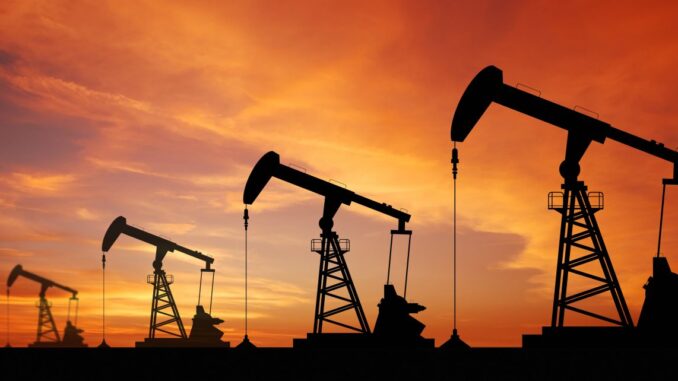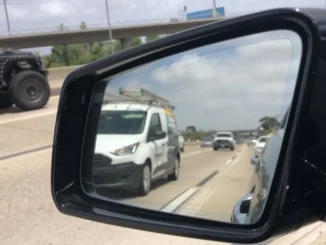
California is rich in natural resources which once powered the state: natural gas deposits in the Monterey Shale formation; geothermal energy, abundant rivers and waterways such as the San Joaquin River Delta and hydroelectric dams; the Pacific coastline; 85 million acres of wildlands with 17 million of those used as commercial timberland; mines and mineral resources, vast farming and agricultural lands, and hunting and fishing.
But California politicians and appointed agency officials, under pressure from radical environmental organizations and lobbyists, decided to ignore the energy producing natural resources, and instead move to an all-electric grid, and the only approved “renewable energy:” solar and wind energy, or “boutique fuels.”
The push by environmentalists and the left to rid California and the United States of oil and gas is real, and it is ramping up under the guise of “Climate Change.”
It was only in December 2018 that the United States exported more oil than we imported, for the first time in nearly 70 years. This is called energy independence. Gas was $3.62 per gallon. And it happened not because of the previous 50 years of dubious federal “energy programs” heavily regulating oil and gas, while promoting alternative energy, but despite them.
For decades elected leaders and environmentalists have peddled the myth of energy scarcity rather than promoting energy development.
In 2020, Gov. Gavin Newsom signed an executive order to phase out the sale of all gasoline-powered vehicles in California by 2035.
In 2018, Gov. Jerry Brown signed legislation to block Trump administration plans for new offshore oil drilling in federal waters on the Pacific Coast. Prior to the Trump administration, Brown asked President Barack Obama in 2016 to permanently ban new offshore oil and gas drilling in the state before leaving office.
Brown also tried to outlaw internal combustion engine vehicles in California by 2025, which Newsom happily advanced via executive order.
On Wednesday, President Biden drove to Massachusetts in a long caravan of black SUVs and declared that the threat of climate change had reached “code red for humanity.” “This is an emergency and I will look at it that way,” the president said. “I’ll use my executive powers to combat the climate crisis in the absence of congressional action.”
Ironically, these oil critics are always successful beneficiaries of the U.S. free enterprise system. Environmentalists would have everyone believe they are immune from the lifestyle supported and supplied by oil, gas and petroleum. But no one lives an oil-free existence.
The relationship between oil and gas, and humans, is inextricably linked. As a nation’s economy grows, its oil consumption naturally follows suit.
Would America be a better place without the “Big Oil” and gas industry?
Oil is the one source of energy that has lifted people out of poverty, and has given us unimaginable products and services, along with the ability to travel.
Driven by technology advancements funded largely by oil companies, air pollution and greenhouse gas emissions have been cut so dramatically that the number of “bad” air quality days in Los Angeles, for example, has dropped by two orders of magnitude.
With the extraction of oil through horizontal drilling and fracking, the U.S. achieved energy independence, and would have become a net exporter of oil and gas by 2025 had the Biden Administration not shut down fracking and the Keystone Pipeline.
When Donald Trump was President, California produced more than 200 million cubic feet of natural gas in 2017 used for heating and cooking in homes and businesses and to generate electricity.
The Utica Shale, which underlies much of the northeastern part of the U.S. is said to contain the richest deposits of natural gas and crude oil in the country. With the excavations in North Dakota’s Bakken Shale alone, enough gas had been discovered to carry on for generations ahead.
California sits on top of the Monterey Shale Formation, a 1,700 square mile oil-bearing shale formation primarily in the San Joaquin Valley that contains an estimated 15 billion barrels of oil. The Monterey Shale Formation is a resource bigger than Utica Bakken formation, and Texas’ Eagle Ford formation, combined, and is one of the largest known deposits of recoverable oil and gas.
However, the oil and gas industry is one of the highest taxed and heavily regulated industries.
Petroleum products are everywhere in modern society and include transportation fuels, home and heating oils, oils for electricity generation, asphalt and road oil, and the feedstocks used to make chemicals, plastics, and synthetic materials found in nearly everything we use today.
Here’s a partial list of the vast catalog of products and material goods made possible by oil and gas:
- Clothing, Birkenstock sandals, sneakers, umbrellas, sunglasses, nail polish, foam curlers;
- computers, calculators, telephones, batteries, ball point pens, copy machines, cameras, flashlights;
- motorcycle helmets, life jackets, dog leashes, tires;
- pacifiers, baby bottles, diapers, crayons, car seats, laundry baskets;
- fishing poles, footballs, Frisbees, golf equipment and golf balls, soccer balls, shotgun shells, tents and sleeping bags, guitar strings;
- inhalers, first aid kits, heart valve replacements, hearing aids, prescription bottles;
- red solo cups, coffee pots, Teflon pans, freezer bags and containers, coasters;
- water pipes, smoke detectors, pillows, and even sofas;
- Anything at REI, Anything at Camping World;
- Anything in a Prius – particularly the cushy seats.
Let’s do a little quiz about so-called environmentalists:
Do environmentalists use Ziploc bags? Do they use toilet paper? Do environmentalists wear Nike’s? Or use iPhone’s? Or have cats and dogs, and leashes, poop bags, and purchase specialty dog foods? Do so-called “environmentalists” cook with Teflon pans? Do they drive automobiles – many of which use batteries, and some with combustible gasoline engines?
Do environmentalists work for the city, county and state, and receive benefits from CalPERS, which has investments in the oil and gas industry? They do.
Do environmentalists avail themselves of government services such as water, sewer, gas, and electricity? Do they have central heat and air conditioning in their homes, condos, mountain cabins, golf course homes, and coastal beach getaways?
We assume that environmentalists buy fresh fruit and vegetables, meat and household staples, at major supermarkets, as well as boutique che’che neighborhood markets, air conditioned and powered by oil and gas.
Environmentalists buy products from China; if they shop at Target, Home Goods, TJ Maxx, Lowe’s, Home Depot, Marshall’s, Macy’s, Nordstrom, Costco, and cute little boutiques. Imagine how much oil and gas China uses to produce these products.
Thank the oil and gas industry for our comfortable lifestyle.
Source: Californiaglobe.com



